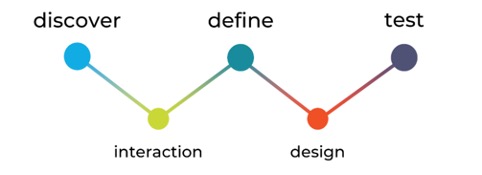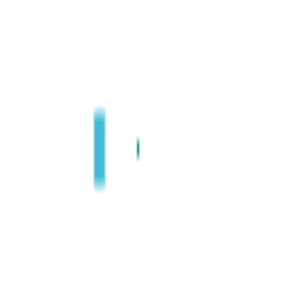CONCEPT VALIDATION FOR STARTUPS AND TECHNOLOGY TRANSFER
Concept Validation: whether it’s a startup or a technology transfer project, it’s a key step before the release of a new product/service.
Product Validation: this process is used to verify that the product, made according to the technical requirements of the project, is also able to meet the needs expressed by the market.
In other words, it verifies that in addition to having made “a good product”, this is also “the right product” that the market expects.
Product Validation can also be very complex and, in order to be effective, it is necessary that the Technology Readiness Level (T.R.L.) of the product must be high, which means that most of the development has taken place. At this point, however, most of the available resources have been used and implementing changes, when possible, can result in a significant deviation from the project objectives in terms of budget and time.
It’s natural, then, to ask ourselves: “Couldn’t we have thought about it before getting this far?”.
It’s precisely to meet this project need that Concept Validation comes into play. It’s a conceptual process that, unlike Product Validation, is already applicable in the product concept phase.
This verification allows the project team to compare in advance the technical and usability requirements of the product with those expressed by the key stakeholders/users of the market for which it is intended. As if to say that before investing funds and time in the development of detailed projects and the construction of prototypes, perhaps it is better to interact with those who will use this product/service, and understand if it will really satisfy a need.
In Day One we’ve been collaborating for years with researchers from all over Europe in the development of high-tech projects and the creation of startups, and we often find ourselves faced with astounding technologies that seem to have already found an application and are projected towards further development.
Since these are technologies deriving from research projects (Technology Push), they do not originate, as can happen in the R&D sectors of large companies, from the need to solve a problem identified through strategic marketing studies (Market Pull).
For the most part, these are “technologies in search of application” that follow the path traced by the line of research from which they originate. Yet, in the history of marketing there are many cases in which a technology born for one specific purpose has then reached success by completely changing its objective: try to imagine if Ferrari had continued to make tractors and Starbucks coffee machines.
For this reason, when we deal with the business development of a research project, we always start with Concept Validation.
We have developed our own method that we now want to share with you, so that your projects can also benefit from it.
We will explain very briefly how we applied our method in the development of a project funded by the European Horizon 2020 program, of which we are business partners: the MARILIA project.
THE DAY ONE APPROACH TO USER CENTERED DESIGN FOR CONCEPT VALIDATION: THE MARILIA PROJECT
MARILIA is a European consortium project that aims to develop and validate a new method of micro-biological analysis for drinking water. This new method will be based on a technology that allows more accurate results, faster and lower costs than the gold standard methods used today.
At the beginning of the project, the technology was still at low T.R.L. and, although drinking water analysis had already been chosen as a field of application, a Product Concept had not yet been defined and validated.
A perfect case for the application of our Concept Validation!
Our method is mainly based on the principles of User Centered Design and Design Thinking, applied however to the development of a high-tech technology.
Our approach involves the engagement of both researchers and key market stakeholders and consists of 5 phases:
- DISCOVERY
- INTERACTION
- DEFINITION
- DESIGN
- TESTING

Figure 1: diagram of the User Centered Design method of D1
-
DISCOVERY
This first phase is focused on gathering as much information as possible about the market. It starts with the chosen application scenario but, at the same time, the results of the technology are schematized to understand if there are also other possible application scenarios that have been neglected so far.
Rest your eyes, get your markers ready and fire up the coffee maker, stacks of reports to read and long brainstorming will be waiting for you!
For MARILIA, we first focused on collecting information about the chosen application scenario, i.e., drinking water. We conducted both MACRO (PESTEL, Trends, benchmark, etc …) and MICRO (Value chain, Stakeholders, interaction opportunities, etc …) research, until we obtained an assessment of the actual potential of this market and selected the key stakeholders.
In the meantime, however, we tried to expand our vision. By relying on the application results of MARILIA’s technology, we reasoned about other possible scenarios, verifying each time “why yes” and “why not” each could represent a good market.
-
INTERACTION
The purpose of this second phase is to interact with the stakeholders that have been selected, in order to obtain direct information on the requirements of the future product. In MARILIA, starting from the map of stakeholders involved in the drinking water market, we were able to select the actors whose point of view could be more important for the project, and we contacted them. Through informal interviews and/or questionnaires we collected “qualitative” information about competing products and the requirements of the ideal product according to their point of view.
-
DEFINITION
Once arrived at this stage, there is so much information, often conflicting, that it is necessary to converge as objectively as possible towards the definition of a product concept that has precise characteristics, expected performances and an added value compared to the existing approaches to the problem.
In MARILIA’s case, the “qualitative” information collected needed to be translated into “quantitative” requirements for our R&D team. To achieve this result, we used a valuable tool: The Quality Function Deployment, and in particular the so-called House of Quality. Thanks to this tool we were able, on the one hand, to translate the subjective-characteristics of the ideal product into technical-objective requirements, taking into account the constraints provided by the team of researchers, and on the other hand, to define the targets to be reached for the new product.
-
DESIGN
At this stage, the technical constraints of the project are known, and the targets to be achieved have been defined together with the R&D team, but a technical and business feasibility study must be carried out before increasing the T.R.L. and proceeding with a prototype.
In short, we know “where” we need to get to, but we must still understand “how” to get there. During the MARILIA project, thanks also to the use experiences gathered from the future end-users, we were able to reconstruct the Use Cases and develop a Concept for our product that will be helpful for this subsequent design and development of the analysis method.
-
TESTING
The MARILIA project is still in the middle of its development, and the team is projected towards the realization of the prototype that will be tested according to the requirements we have defined.
If the prototype fails to meet these requirements, we will take a step back and repeat the process, looking for new targets, until we reach the maximum possible result with our technology.
YES, BUT IS IT ALWAYS APPLICABLE?
So far, we have been lucky enough to follow various technological development projects in different industrial sectors and we know how each technology has a story of its own. The “mare magnum” of innovation always hides new pitfalls and there are as many possible routes as many markets.
Nevertheless, the tools we can rely on are very few: one of these is undoubtedly Concept Validation. At the end of the Concept Validation process, we will have something similar to a good map, based on the experience of those who have lived in the “markets” where we hope to land, and that could, hopefully, save us a useless and expensive journey, taking us instead to where we will be useful and appreciated.
With this mini-guide we hope to have given you a few more tools to draw your own map to the market success.

